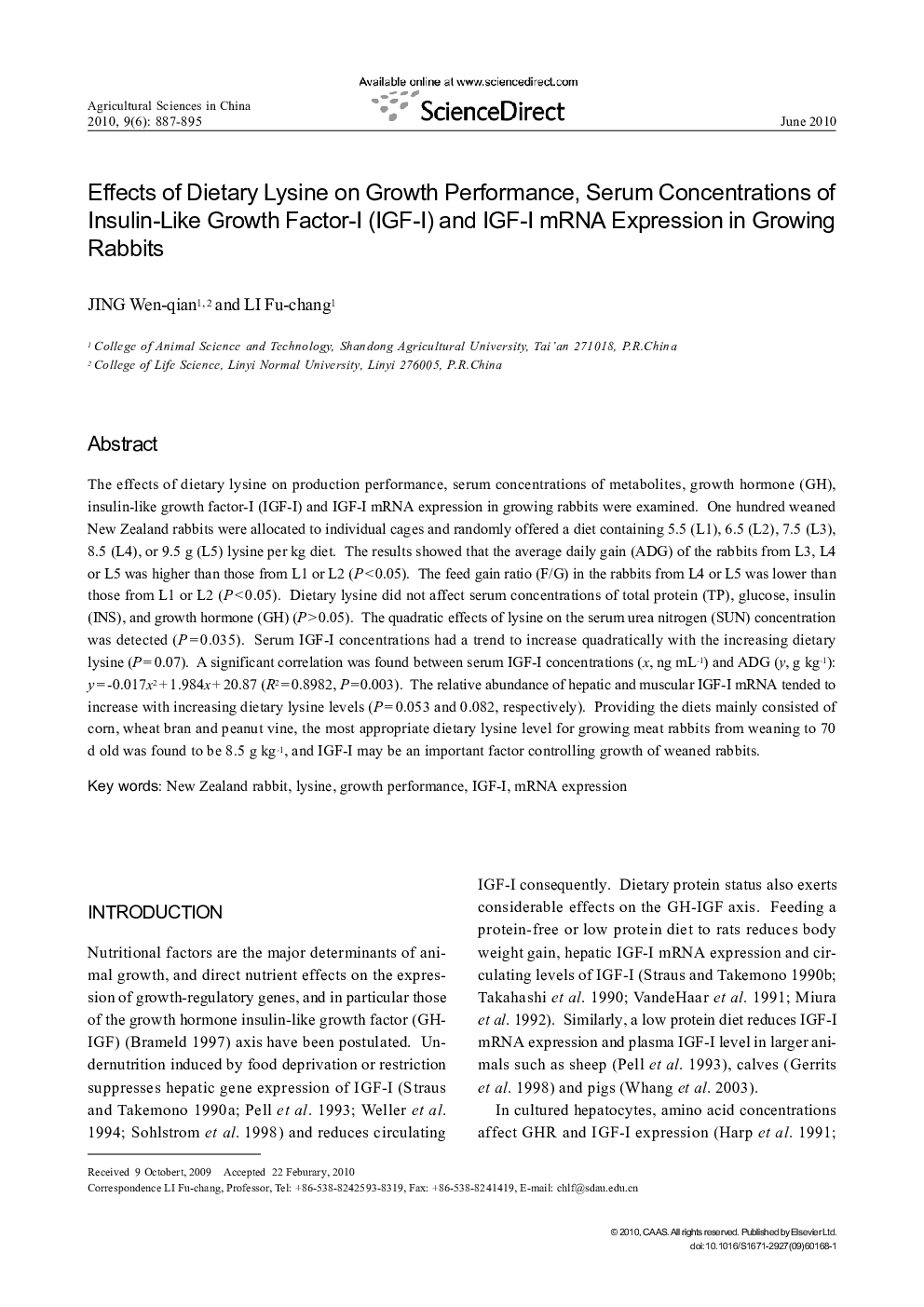| Article ID | Journal | Published Year | Pages | File Type |
|---|---|---|---|---|
| 4490136 | Agricultural Sciences in China | 2010 | 9 Pages |
The effects of dietary lysine on production performance, serum concentrations of metabolites, growth hormone (GH), insulin-like growth factor-I (IGF-I) and IGF-I mRNA expression in growing rabbits were examined. One hundred weaned New Zealand rabbits were allocated to individual cages and randomly offered a diet containing 5.5 (L1), 6.5 (L2), 7.5 (L3), 8.5 (L4), or 9.5 g (L5) lysine per kg diet. The results showed that the average daily gain (ADG) of the rabbits from L3, L4 or L5 was higher than those from L1 or L2 (P < 0.05). The feed gain ratio (F/G) in the rabbits from L4 or L5 was lower than those from L1 or L2 (P < 0.05). Dietary lysine did not affect serum concentrations of total protein (TP), glucose, insulin (INS), and growth hormone (GH) (P > 0.05). The quadratic effects of lysine on the serum urea nitrogen (SUN) concentration was detected (P = 0.035). Serum IGF-I concentrations had a trend to increase quadratically with the increasing dietary lysine (P = 0.07). A significant correlation was found between serum IGF-I concentrations (x, ng mL−1) and ADG (y, g kg−1): y = −0.017x2 + 1.984x + 20.87 (R2 = 0.8982, P = 0.003). The relative abundance of hepatic and muscular IGF-I mRNA tended to increase with increasing dietary lysine levels (P = 0.053 and 0.082, respectively). Providing the diets mainly consisted of corn, wheat bran and peanut vine, the most appropriate dietary lysine level for growing meat rabbits from weaning to 70 d old was found to be 8.5 g kg−1, and IGF-I may be an important factor controlling growth of weaned rabbits.
